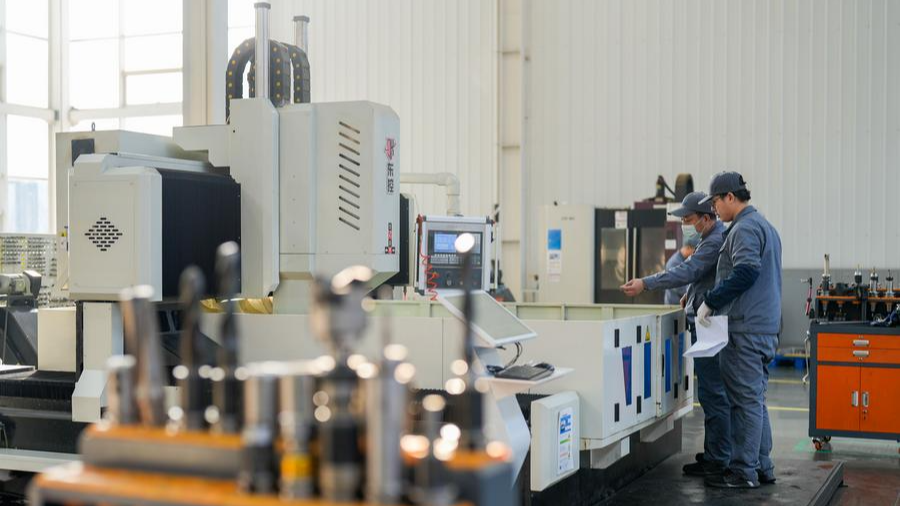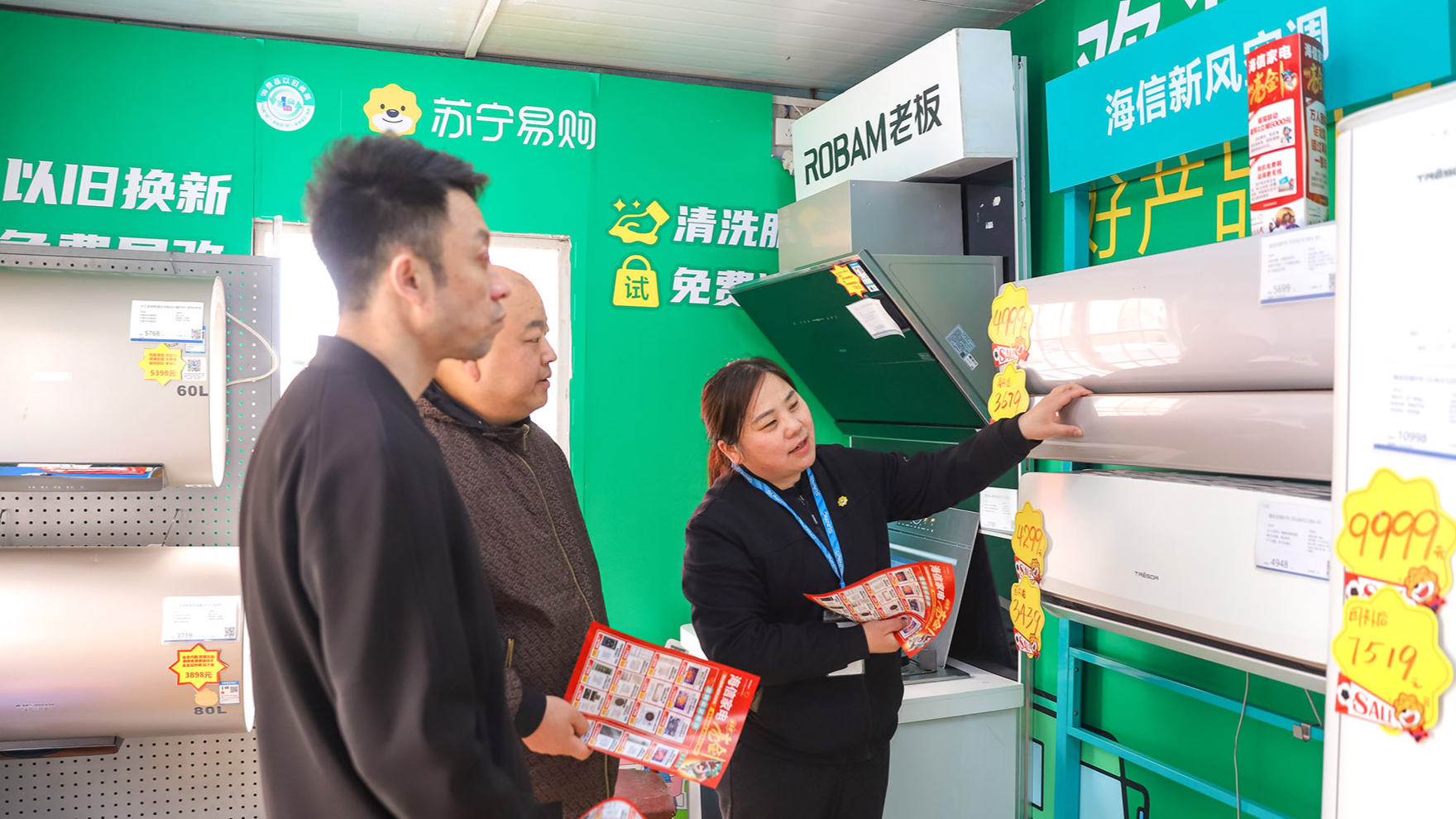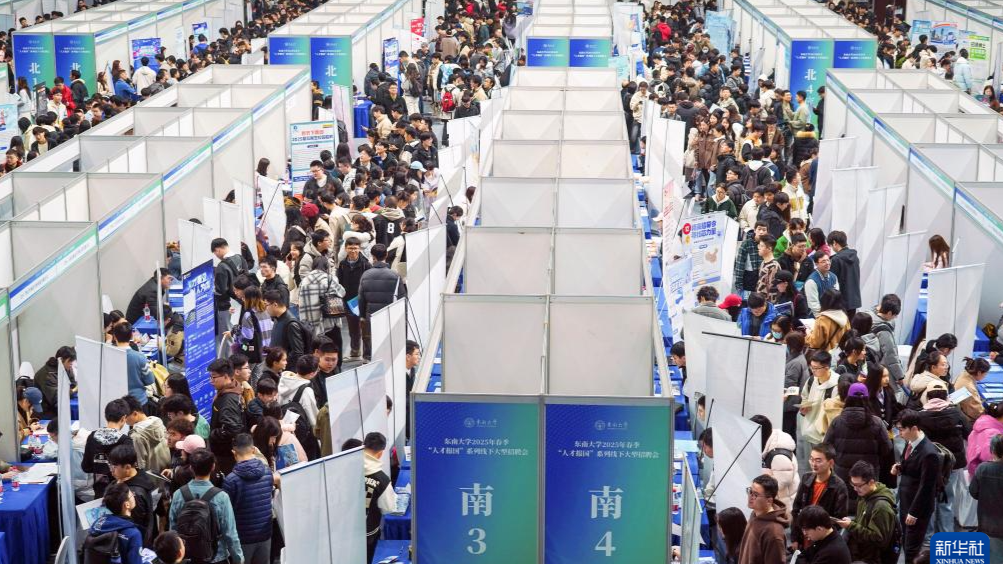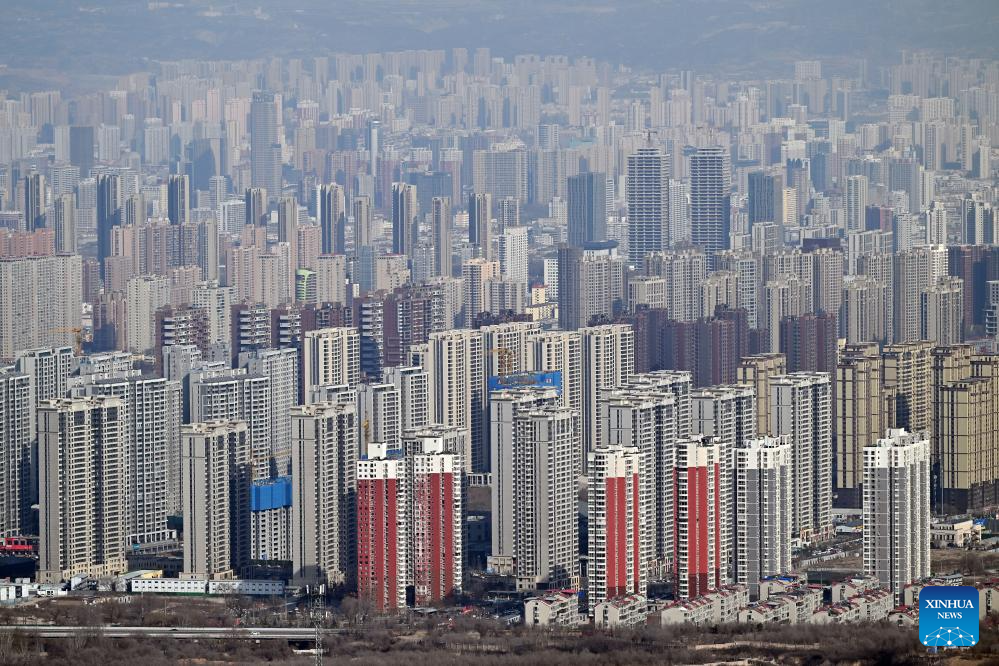
BEIJING - China's gross domestic product (GDP) grew 5.4 percent year-on-year in the first quarter of 2025, data from the National Bureau of Statistics showed Wednesday.
The country's GDP reached 31.8758 trillion yuan ($4.42 trillion) during this period, the bureau's data showed.
On a quarterly basis, the economy increased 1.2 percent in the first three months.
China's GDP grew 5 percent year-on-year last year and the country has targeted its full-year economic growth at around 5 percent for 2025.
Industrial output
The official data also indicated that China's industrial production posted strong growth in March, as the country's economic recovery gained momentum amid the government's efforts to support growth and counter external economic headwinds.
The country's value-added industrial output expanded 7.7 percent year-on-year in March, according to data from the bureau.
During the January-March period, the value-added industrial output increased 6.5 percent year-on-year, accelerating from a rise of 5.9 percent registered in the first two months of the year.
The country's industrial production in March climbed 0.44 percent month-on-month, according to the bureau.
The bureau uses the value-added industrial output to measure the activity of large enterprises boasting an annual main business turnover of at least 20 million yuan.

A breakdown of the data showed that the equipment and high-tech manufacturing sectors are making greater contributions to industrial output, signaling ongoing progress in the country's efforts to make industry smarter, greener and more high-end, the bureau's deputy head Sheng Laiyun told a press conference on Wednesday.
Output of the equipment manufacturing sector, which took up 33.7 percent of the overall industrial output, climbed 10.9 percent in the first quarter of the year.
ALSO READ: China's industrial output up 5.9% in first two months
The high-tech manufacturing sector, which accounted for 15.7 percent of the total industrial output, saw its value-added output climb 9.7 percent year-on-year during this period. The production of new energy vehicles and industrial robots increased by 45.4 percent and 26 percent, respectively, according to the official data.
Fixed-asset investment
The bureau also revealed that the fixed-asset investment went up 4.2 percent year-on-year in the first quarter, 1 percentage point higher than the full-year growth rate of 2024.
The investment totaled 10.32 trillion yuan during the period, the bureau said in a statement.
The growth rate also marked an increase of 0.1 percentage points compared to that recorded in the first two months, the official data showed.
Investment in infrastructure construction rose 5.8 percent from a year ago during the period, and manufacturing investment increased 9.1 percent, according to the data.
Excluding the property sector, the country's fixed-asset investment rose 8.3 percent in the first three months of 2025. Investment in property development fell 9.9 percent year-on-year during the period.
Sheng, deputy head of the bureau, said that China's real estate market remains in an adjustment period. However, with the country's ongoing urbanization, there is still growth potential in the sector, driven by strong demand for green, spacious and comfortable quality homes, he added.
Wednesday's data also showed that China's northeastern regions, including Heilongjiang, Jilin, and Liaoning provinces, recorded the fastest fixed-asset investment growth in the first quarter, rising by 9.7 percent.
High-tech industry saw robust fixed-asset investment growth, with investment in aerospace vehicle and equipment manufacturing soaring by 30.3 percent, while investment in computer and office device manufacturing surged by 28.5 percent.
Meanwhile, fixed-asset investment from the private sector grew by 0.4 percent in the first quarter, reversing a previous decline in 2024, Sheng said, noting that a raft of policies rolled out by the government aims to foster a fair business environment and encourage private sector investment.
The National Development and Reform Commission, China's top economic planner, announced in February that it will help private enterprises make contributions to major national strategies, enhance security capacities in key areas, and participate in large-scale equipment upgrades and consumer goods trade-in programs. This followed a high-profile symposium focusing on private enterprises attended by top Chinese leaders and representatives of private entrepreneurs on Feb. 17.

Retail sales
The retail sales of consumer goods, a major indicator of the country's consumption strength, expanded 4.6 percent year-on-year in the first quarter, as government pro-consumption policies paid off, the bureau's data showed.
This growth pace is 1.1 percentage points faster than the 2024 level, according to the bureau. Total retail sales of consumer goods reached 12.47 trillion yuan in the January-March period.
In March alone, retail sales of consumer goods rose 5.9 percent year-on-year, accelerating from the 4 percent growth recorded in the first two months, according to the bureau.
China's online retail sales went up 7.9 percent year-on-year during the first quarter, sustaining relatively fast growth. Backed by the government's consumer goods trade-in program, sales of communication devices surged 26.9 percent, while that of home appliances and audio equipment went up 19.3 percent.
China has positioned the boosting of spending and expansion of domestic demand as a priority in this year's economic work agenda. The country unveiled a comprehensive pro-spending policy package last month, which aimed to strengthen consumer confidence via measures including the promotion of income growth and a reduction of financial burdens.
In a broader push to bolster domestic demand, China also renewed its consumer goods trade-in program in 2025, increasing funding from last year's 150 billion yuan to 300 billion yuan through ultra-long special treasury bonds and extending subsidies to more electric gadgets and home appliances, such as smartphones, tablets and smartwatches.
ALSO READ: China unveils plan to boost service consumption in 2025
"Given the current situation, these policies are taking effect and their impact is becoming increasingly evident," Sheng, deputy head of the bureau, told a press conference.
He cited data from the commerce ministry which shows that as of April 7, Chinese consumers had purchased 35.71 million units of home appliances through the trade-in program and submitted 2.085 million applications for automobile trade-in subsidies.
Notably, services consumption expanded even faster than that of goods, with retail sales of services growing by 5 percent in the first quarter of 2025 compared with a year earlier.
Sheng, in particular, noted the double-digit growth in consumption related to upgrading of consumption structure. In the first three months of this year, China's per capita expenditure on transportation and communications grew by 10.4 percent year-on-year, while that on education, culture and entertainment increased by 13.9 percent.
"Services spending is a key sector to support future consumption growth, which boasts substantial growth potential," Sheng told the press.
Disposable income
Meanwhile, the data indicated that the country's per capita disposable income went up 5.5 percent year-on-year in nominal terms in the first quarter.
The country's per capita disposable income stood at 12,179 yuan in the first three months, the bureau said.
The income growth of rural residents outpaced that of urban residents. Specifically, per capita disposable income in rural areas increased by 6.2 percent while urban per capita disposable income rose by 4.9 percent.
Median per capita disposable income nationwide was 9,939 yuan in Q1, a nominal increase of 5 percent year-on-year.

Umployment rate
In the job market, the surveyed urban unemployment rate on average stood at 5.3 percent from January to March, the bureau said.
In March, the rate was 5.2 percent, down 0.2 percentage points from the previous month, according to the official data.
As of the end of March, the total number of rural migrant workers grew 1.1 percent year-on-year to 187.95 million.
China has set a target for a surveyed urban unemployment rate of around 5.5 percent in 2025 and aims to create over 12 million new urban jobs.
ALSO READ: AI wave reshaping China's job market landscape
Home prices
Commercial home prices in March rose in more Chinese cities from a month ago as transactions became more vibrant in the real estate market, data from the bureau showed.
A bureau survey covering 70 major cities said the prices of new houses were higher in 24 cities last month, up from 18 in February, while resold homes in 10 cities logged price increases, up by 7.
Home prices in first-tier cities, namely Beijing, Shanghai, Guangzhou and Shenzhen, increased last month compared to February, while second- and third-tier cities in general registered narrowed price declines, according to the official data.
On a year-on-year basis, Chinese cities at large continued to see smaller home price drops in March, the bureau said.
Wednesday's data added to evidence that the property sector continued to stabilize last month thanks to government policies unveiled over the past few months to support developers and improve market sentiment.
Since the fourth quarter of last year, the central government has stepped up efforts to halt the downturn of the real estate market.
An integrated policy package has been rolled out to boost investment, accelerate the renovation of old urban neighborhoods, expand the supply of affordable housing, and implement a "white list" mechanism to direct financial support to qualified developers.

Analysts believe that at the heart of the efforts is a push to stimulate housing transactions.
"The policy mix - including more flexible mortgage policies, lower interest rates on existing home loans, reduced taxes on home upgrades, and adjustments to the housing provident fund - has eased the burden on homebuyers and further unlocked housing demand," said Hou Yongzhi with the Development Research Center of the State Council.
The property sector has begun to show signs of recovery over the past months.
"In March, we observed positive price changes in both new and second-hand housing markets across first-, second- and third-tier cities," Sheng, deputy head of the bureau, told a press briefing.
Official data has revealed a notable narrowing in the year-on-year declines in both volume and value of new home sales in the first quarter, compared with full-year figures from 2024. Meanwhile, as market activity picks up, developers have reported better performance, and the contraction in both corporate and individual mortgage lending has slowed.
While the market currently remains in a period of adjustment, the long-term outlook is promising. Urbanization in China is far from complete, and demand for high-quality, green, and comfortable living spaces continues to grow.
For the first time, the phrase "quality homes" appeared in the government work report this year. The report published in March called for efforts to "improve the standards and regulations on building quality homes that are safe, comfortable, eco-friendly, and smart".
At the end of March, the Ministry of Housing and Urban-Rural Development released new national standards for residential projects, aiming to meet the people's demand for improved quality of living.
The new standards, effective May 1, include a minimum ceiling height of three meters for new residential buildings, up from 2.8 meters at present, mandatory elevators for structures with four or more floors, and enhanced sound insulation standards for walls and floors.
"Building quality homes will become a new track in the transformation of the property sector," said Chen Weiguo, chairman of China Construction Third Engineering Bureau Co Ltd.
Authorities will continue to implement policies aimed at stabilizing the market, Sheng said. "We will intensify efforts to promote the construction of quality homes, foster a new development model for the real estate sector, and ensure its long-term healthy development," he said.


